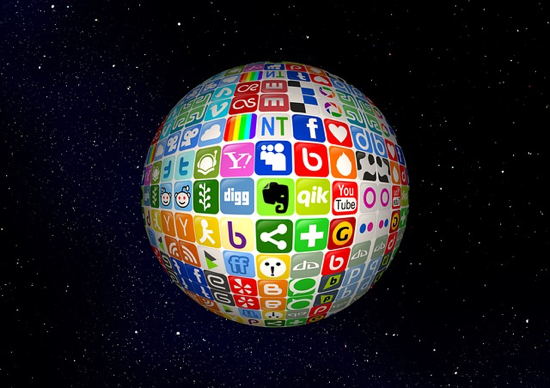Six social media myths that are holding back your online business
Social media is an important factor for business success. But gaining a large, relevant audience and making an impact on social media as a small business can be tricky. Many are still struggling to digest what social media can do for their business, as well as how to develop an effective strategy that adapts to the continuous changes on each platform.
Below are the biggest misconceptions about using social media for business, and some tips to right your wrongs.
Myth: You have to be on every social media channel
This is one of the most common misconceptions about using social media for business. Why it’s perpetuated? Because when business owners don’t know what they’re supposed to do, they feel the need to be everywhere and to do everything. You can’t go wrong with more, right? Wrong!
Just because there is a new and exciting platform on the web, it doesn’t mean that you need to be on it. Before you decide which channels to use to communicate with your audience, it’s crucial to do your research and understand:
- Where you customers spend their time online and which channels they use most often.
- How they interact with these channels.
- For example, a Pinterest account would make complete sense for a handmade jewellery shop or a fashion brand but no so much for a lawyer.
What to do instead: Focus your efforts on the social media channels where your target audience is spending time online. If your audience isn’t there, there’s no point in investing time and resources into building a presence on that particular social media channel. Milling around all available networks just for the sake of it is a waste of time.
Myth: Social media only works for companies with young audiences
If your customers are older, what’s the point of using social media to reach them? They don’t go online that often anyway. Seriously?
Here’s a fact for you: a whopping 56% of Internet users ages 65 and older now use Facebook, up from 45% in late 2013 and 35% in late 2012. Also, the fastest growing demographic on Twitter is users within the 55 to 64 year age bracket.
What to do instead: There’s no denying that most young people are on social media but that doesn’t means that all social media users are young people. Any business can make social media work for them but first you need to find out where your audience spends time online.
Myth: The more you post, the better
You might think that pushing content every half hour will ensure optimal results on social media, because this way no one will ever miss your posts. False!
Your audience follows your brand for particular reasons. But if you talk too much through your channels, your fan base will find you irritating and sooner or later turn a blind eye on your brand. So, talking too much can do worse for your brand than good.
What to do instead: You need to find the right balance between posting relevant content for your fan base, information about your business and random topics of interest that might come up in real time. For example, your Twitter followers might enjoy many updates throughout the day while your Facebook fans might find you irritating if you post more than one or two updates per day.
It all comes down to knowing your audience and making sure that everything you post is useful and interesting for them. This article has some great information and a useful graphic about posting frequency and how to post often without being regarded as a spammer.
Myth: Social media is a marketing channel
It’s not uncommon for companies to look at social media as a marketing channel. Sure, it’s a communication channel but not solely a broadcast channel. So, don’t be surprised when blasting messages about your business and your offering in one direction – from you to them – generates no results. That’s usually the biggest complaint I hear: we’re posting and posting and posting and nothing’s happening – no traffic, no engagement, no sales.
What to do instead: The idea is to engage your audience and to keep them engaged with content that brings value. Also, do fun stuff. Think sweepstakes, giveaways, contests, puzzles, and anything else that requires your fans to engage with your brand to win.
Myth: High numbers = success
If you think that high numbers equal success, think again. Ok, so your Facebook page has 2,500 fans but that doesn’t necessarily mean that your social media strategy is paying off. Not if you’re posting an update and you only get about five likes and no comments or shares. If no one’s interested in what you have to say or in engaging with your brand, then what’s the point?
Is it possible that you’re posting too often? Or that the content you’re sharing is boring? Or that you’re not posting when your audience is online, during specific hours? You’ll never know unless you look at your analytics.
What to do instead: Make friends with your analytics tools. Every social media channel has tools that allow you to track different engagement metrics. Tools like Hootsuite, Facebook Insights and Google Analytics can help shed some light on metrics that can give you valuable insights into what’s working.
You might look at your analytics and discover that you’re posting too often on Facebook, and your fans are starting to ignore your messages. This means that you’ll need to limit your updates to one-two posts per day. You might also discover that you’re sharing stuff at hours when everyone’s sleeping or working. Look into that to find out when your audience is most active on social media channels.
Don’t know where to look? Check out our guide on Facebook and Twitter analytics to learn which metrics to track and how to ensure you’re making an impact on two of the most widely used social networks available.
Myth: Social media is free!
Well, creating an account is, but if you want to get noticed and keep your fans and followers engaged, you’ll need to invest some money. All that time you’re putting into discovering, curating, publishing, responding, and promoting your brand on social media is not free.
Also, just because your Facebook page has 5,000 fans, that doesn’t mean that every time you share an update all those fans will see it in their news feed.
Social platforms are constantly changing their algorithms to force brand owners to pay to reach their audience. This means that the ability for your messages to get noticed without promoting or boosting your posts is decreasing every day.
What to do instead: If you want to learn how to advertise on social media channels, check out these two guides to get started:
- The essential guide to getting started with Twitter advertising
- The essential guide to getting started with Facebook ads
Further reading
If you want to make sure that your social media efforts will pay off, these guides will explain what you should be focusing on to make an impact on social media:
- Start by figuring out which social media platform your business should be on
- Then learn how to create a social media action plan
- Find out how to make the most of social media by using it in your marketing mix
- And finally go through the social media dos and don’ts
Your turn now: what other misconceptions about social media for business have you heard/ read about?










